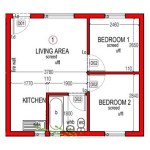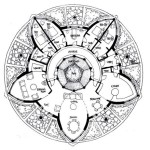Exploring the Charm and Functionality of Country Home Plans
Country home plans evoke a sense of warmth, relaxation, and connection to nature. They are often characterized by their emphasis on comfortable living spaces, practical layouts, and aesthetic features that blend seamlessly with the surrounding landscape. These plans cater to individuals and families seeking a retreat from the hustle and bustle of urban life, prioritizing a slower, more deliberate pace.
The appeal of country home plans lies in their versatility. They can range from charming, rustic farmhouses to elegant, sophisticated estates, each designed to reflect the unique preferences and lifestyle of the homeowner. The architectural styles vary widely, encompassing elements of traditional American, European, and contemporary designs, all adapted to suit the rural or suburban setting.
The selection of a country home plan is a significant undertaking, requiring careful consideration of various factors, including budget, lot size, family needs, and aesthetic preferences. A thorough understanding of the different styles, features, and construction techniques is essential to ensure that the chosen plan aligns with the homeowner’s vision and lifestyle.
Many country home plans incorporate features such as large porches, fireplaces, open floor plans, and ample storage space. These elements contribute to the overall comfort and functionality of the home, making it a welcoming and practical space for everyday living and entertaining.
Country-style architecture typically emphasizes natural materials such as wood, stone, and brick. These materials not only enhance the aesthetic appeal of the home but also contribute to its durability and energy efficiency. Large windows are also common, allowing natural light to flood the interior spaces and providing panoramic views of the surrounding landscape.
Key Point 1: Understanding the Essential Elements of Country Home Plans
Country home plans are distinguished by several key elements that contribute to their unique character and functionality. These elements include architectural style, material selection, interior layout, and site considerations. Understanding each of these aspects is crucial for selecting a plan that meets the homeowner's specific needs and preferences.
Architectural Style:
Country home plans encompass a wide range of architectural styles, each with its own distinct characteristics. Some popular styles include: *Farmhouse:
Farmhouse-style homes are characterized by their simple, functional design, often featuring a large front porch, gabled roof, and board-and-batten siding. They emphasize practicality and comfort, with spacious layouts and ample storage space. *Cottage:
Cottage-style homes are typically smaller and more intimate, with charming details such as dormer windows, stone accents, and flower-filled gardens. They evoke a sense of warmth and coziness, making them ideal for individuals or small families. *Ranch:
Ranch-style homes are characterized by their single-story layout, low-pitched roof, and large windows. They are typically designed for easy living, with open floor plans and direct access to the outdoors. *Craftsman:
Craftsman-style homes are known for their handcrafted details, such as exposed rafters, wide eaves, and built-in cabinetry. They emphasize quality craftsmanship and natural materials, creating a warm and inviting atmosphere.Material Selection:
The choice of materials plays a crucial role in defining the aesthetic and durability of a country home. Common materials include: *Wood:
Wood is a versatile and widely used material for country homes, offering both structural support and aesthetic appeal. It can be used for framing, siding, flooring, and interior trim. *Stone:
Stone is a durable and aesthetically pleasing material that can be used for foundations, walls, fireplaces, and landscaping features. It adds a touch of rustic charm and provides excellent insulation. *Brick:
Brick is a classic material that is known for its durability and low maintenance requirements. It can be used for exterior walls, fireplaces, and patios. *Natural Siding:
Other natural siding options like cedar shake, wood clapboard, or even stucco add a visually pleasing aesthetic to the exterior.Interior Layout:
Country home plans typically feature open floor plans that promote social interaction and create a sense of spaciousness. Other common interior features include: *Large Kitchens:
Country kitchens are often designed as the heart of the home, with ample counter space, storage, and seating areas. They are ideal for cooking, entertaining, and gathering with family and friends. *Fireplaces:
Fireplaces provide warmth and ambiance, creating a cozy and inviting atmosphere. They are often located in the living room or family room, serving as a focal point for the space. *Mudrooms:
Mudrooms provide a practical space for storing outdoor gear, such as coats, boots, and umbrellas. They help to keep the rest of the home clean and organized. *Ample Storage:
Country homes often feature ample storage space, including closets, pantries, and attics. This is essential for keeping the home clutter-free and organized.Site Considerations:
The location and orientation of a country home can significantly impact its energy efficiency, privacy, and overall appeal. Key site considerations include: *Sunlight:
Optimizing sunlight exposure can help to reduce heating and cooling costs. South-facing windows can capture passive solar heat in the winter, while shading devices can prevent overheating in the summer. *Prevailing Winds:
Orienting the home to take advantage of prevailing winds can help to improve natural ventilation. This can reduce the need for air conditioning and create a more comfortable indoor environment. *Views:
Maximizing views of the surrounding landscape can enhance the aesthetic appeal of the home and create a sense of connection to nature. *Privacy:
Positioning the home to maximize privacy can help to create a sense of seclusion and tranquility. This can be achieved by strategically placing trees, shrubs, and fences.Key Point 2: Navigating the Process of Selecting a Country Home Plan
Choosing the right country home plan involves a systematic approach that considers various factors. This process typically includes defining needs and preferences, researching available plans, evaluating suitability, and engaging with professionals.
Defining Needs and Preferences:
The first step in selecting a country home plan is to clearly define the homeowner's needs and preferences. This involves considering factors such as: *Family Size:
The number of bedrooms and bathrooms required will depend on the size of the family. *Lifestyle:
The homeowner's lifestyle will influence the layout and features of the home. For example, someone who enjoys entertaining will need a large kitchen and dining area. *Budget:
The budget will determine the size, style, and features of the home that are affordable. *Location:
The location of the home will influence the architectural style and site considerations.Researching Available Plans:
Once the homeowner's needs and preferences are defined, the next step is to research available country home plans. This can be done by: *Online Resources:
Numerous websites offer a wide selection of country home plans, allowing homeowners to browse different styles, sizes, and features. *Plan Books:
Plan books are a traditional resource that features collections of country home plans from various designers. *Architects and Designers:
Engaging with an architect or designer can provide personalized assistance in selecting or customizing a country home plan.Evaluating Suitability:
After identifying a few potential plans, it is essential to evaluate their suitability based on the following criteria: *Lot Size and Shape:
The plan should be compatible with the size and shape of the building lot. *Zoning Regulations:
The plan should comply with all local zoning regulations. *Building Codes:
The plan should meet all applicable building codes. *Budget Feasibility:
The estimated cost of construction should be within the homeowner's budget.Engaging with Professionals:
Once a suitable plan has been identified, it is advisable to engage with professionals such as: *Architect:
An architect can review the plan and make any necessary modifications to ensure that it meets the homeowner's needs and complies with local regulations. *Builder:
A builder can provide an accurate cost estimate and oversee the construction process. *Interior Designer:
An interior designer can assist with selecting interior finishes, fixtures, and furniture that complement the style of the home.Key Point 3: Showcasing Specific Examples of Country Home Plans
To provide a more concrete understanding of country home plans, it is helpful to examine specific examples that illustrate different styles, features, and layouts. Providing visual representations with detailed descriptions can further enhance the reader's understanding.
Example 1: The Classic Farmhouse
This plan features a traditional farmhouse design with a large front porch, gabled roof, and board-and-batten siding. The interior includes an open floor plan with a spacious kitchen, a cozy living room with a fireplace, and a mudroom for storing outdoor gear. There are three bedrooms and two bathrooms, making it ideal for a small family. Large windows throughout the house allow for ample natural light and views of the surrounding countryside.
Key features include a wraparound porch that provides ample outdoor living space, a large kitchen island with seating for casual dining, and a master suite with a walk-in closet and a luxurious bathroom.
Example 2: The Charming Cottage
This plan showcases a charming cottage design with dormer windows, stone accents, and a flower-filled garden. The interior includes a cozy living room with a fireplace, a small but functional kitchen, and two bedrooms with one bathroom. The plan is perfect for individuals or couples seeking a comfortable and low-maintenance home.
Key features include a stone fireplace that serves as a focal point in the living room, a small but well-equipped kitchen with custom cabinetry, and a private patio for outdoor relaxation.
Example 3: The Modern Ranch-Style Country Home
This design blends the classic ranch-style layout with modern amenities and country aesthetics. It includes sprawling open spaces, a chef-style kitchen with a large island, and three bedrooms with en-suite bathrooms. Large sliding glass doors often lead to a patio or deck, ideal for outdoor entertaining.
Key features include energy-efficient windows, smart home integration, and accessibility features designed for aging in place, showcasing how modern technology and country living can coexist.

Country House Plans Floor With Front Porches

Country Style House Plans Home Designs

Country House Plans Home Style Thd

Country House Plan 192 1048 2 Bedrm 1898 Sq Ft Home Theplancollection

Plan 62149v 3 Bed Modern Country Home With Split Beds House Plans Farmhouse

Beautiful Small Country House Plans With Porches Houseplans Blog Com

Country House Plans Sater Design Collection

Country House Plans Classic Farmhouse Style For Growing Families

Country Home Plan 3 Bedrms 2 Baths 1397 Sq Ft 153 1651

Beautiful Small Country House Plans With Porches Houseplans Blog Com








